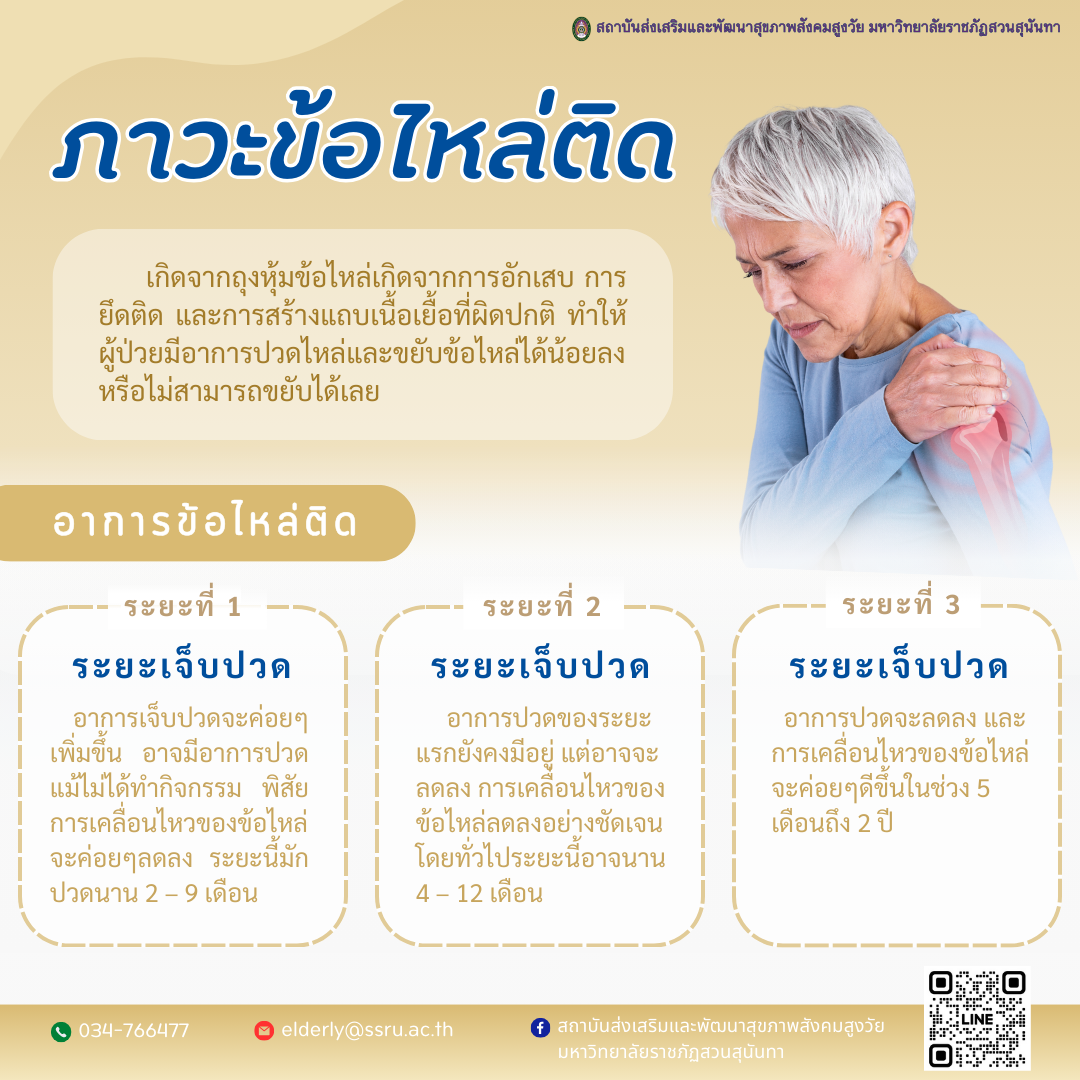
Frozen Shoulder
Causes of frozen shoulder
• Shoulder tendinitis. It usually occurs in the elderly due to prolonged use of the shoulder joint. make muscle tendons The cyst deteriorates. Tears can occur or are caused by sports that require a lot of arm strength or accidents. There is usually pain that comes on gradually. Before you know it, it may cause frozen shoulder.
• Shoulder membrane inflammation.
It usually occurs in the elderly due to prolonged use of the shoulder joint. Causes friction on the shoulder membrane. There is a slight tear or a severe tear. There is often pain around the shoulder joint in a wide area around the shoulder joint. Shoulder capsulitis often has localized tender points. The pain can be acute or progressive which causes frozen shoulder.
• Muscle tissue pain syndrome.
It can occur from young people to the elderly, with fibrosis occurring in muscles such as the shoulder muscles. shoulder blade muscle Shoulder muscles that cause pain There is often deep pain in the muscles involved in shoulder movement. Some cases can be severe, causing the muscles to appear weak. Unable to move the shoulder joint and having pain radiating to the arm or numbness. Those symptoms cause contractions. As a result, the movement of the shoulder joint is reduced.
Frozen shoulder symptoms
Symptoms of frozen shoulder have 3 stages:
• Stage 1: Painful stage.
The pain will gradually increase. There may be pain even when not doing activity or pain when moving the shoulder joint. The range of motion of the shoulder joint gradually decreases. At this stage the pain usually lasts 2 – 9 months.
• Stage 2: Ankle stage.
The pain of the first stage still exists, but may decrease. The movement of the shoulder joint is markedly reduced. It can greatly affect your daily routine. This phase can generally last 4 – 12 months.
• Phase 3: recovery period.
The pain will decrease. And the movement of the shoulder joint will gradually improve over a period of 5 months to 2 years.
• How to treat frozen shoulder
See a doctor and a physical therapist: If you have pain and are not comfortable using your shoulder joint. You should see a doctor for a diagnosis and treatment recommendations. Sometimes a physical therapist can help strengthen the muscles involved in the shoulder joint.
Proper training and movement: Proper training and movement can help reduce injury and discomfort when moving your shoulder. Your doctor or physical therapist can advise you on appropriate tips and exercises.
Injury control: If there is an injury to the shoulder joint You should stop using the shoulder and use appropriate treatment for the injury, such as icing and stretching the tendons.
Shoulder dystocia treatment and rehabilitation can take time and patience, so consult with your doctor and physical therapist on an ongoing basis. So that the frozen shoulder condition can be properly restored.
